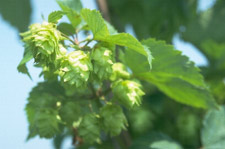The things you come across when looking for something else . . .
In this case a “diary entry” from 1996, when we were doing a little field research for Beer Travelers projects:
Ephrata, Pa., April 19
The walls of Wahtney’s Inn are fieldstones, and some of the floor and ceiling are from when an inn was first built here in 1767. Meanwhile, there’s a computer terminal in the middle of the bar so patrons can cruise the Internet. It’s new and not working today. The bar has Blue Moon beer on tap, and after the bartender draws a pint for a customer, we ask her if she knows which brewery produces the beer. She’s stunned to find out this is a Coors product; because of political reasons, she doesn’t drink Coors. “Thank goodness I’ve only had a small taste,” she says, thanking us for the information. Next time somebody tells you that truth in labeling doesn’t make a difference, remember her.
Blue Moon has done pretty well the last 10 years based on what’s inside the bottle. Although Coors doesn’t heap advertising dollars on Blue Moon, it sold 200,000 barrels of the brand in 2005. Among craft brands, only Sam Adams Boston Lager, Sierra Nevada Pale Ale and New Belgium Fat Tire were more popular.
It’s what’s outside the bottle that is troubling. As carefully as you look at a Blue Moon bottle, 6-pack holder or 12-pack box you won’t find information that Coors brews the beer.
Back in 2000, Coors agreed to change the labels on cans and bottles of Blue Moon to settle a lawsuit filed by Belgian brewers. The lawsuit, filed by the Confederation of Belgian Breweries November 1999, alleged the packaging on Coors’ Belgian-style beer led drinkers to believe it was brewed in Belgium.
So now they made it clear that Blue Moon is brewed in the the United States (the label would lead you to believe Denver), but not who the brewer is.
Shouldn’t they do that?
 The Wall Street Journal has a feature today on
The Wall Street Journal has a feature today on